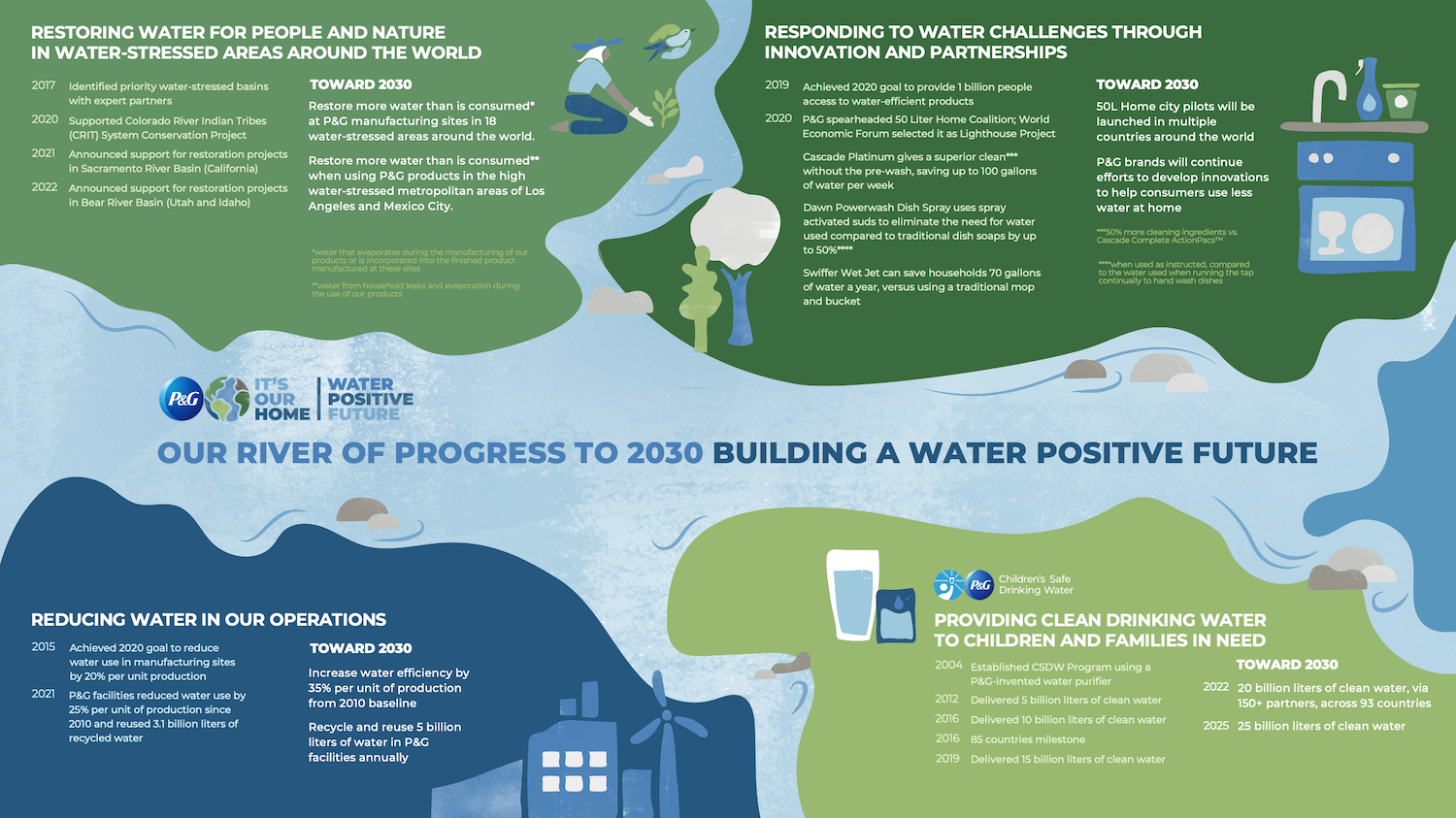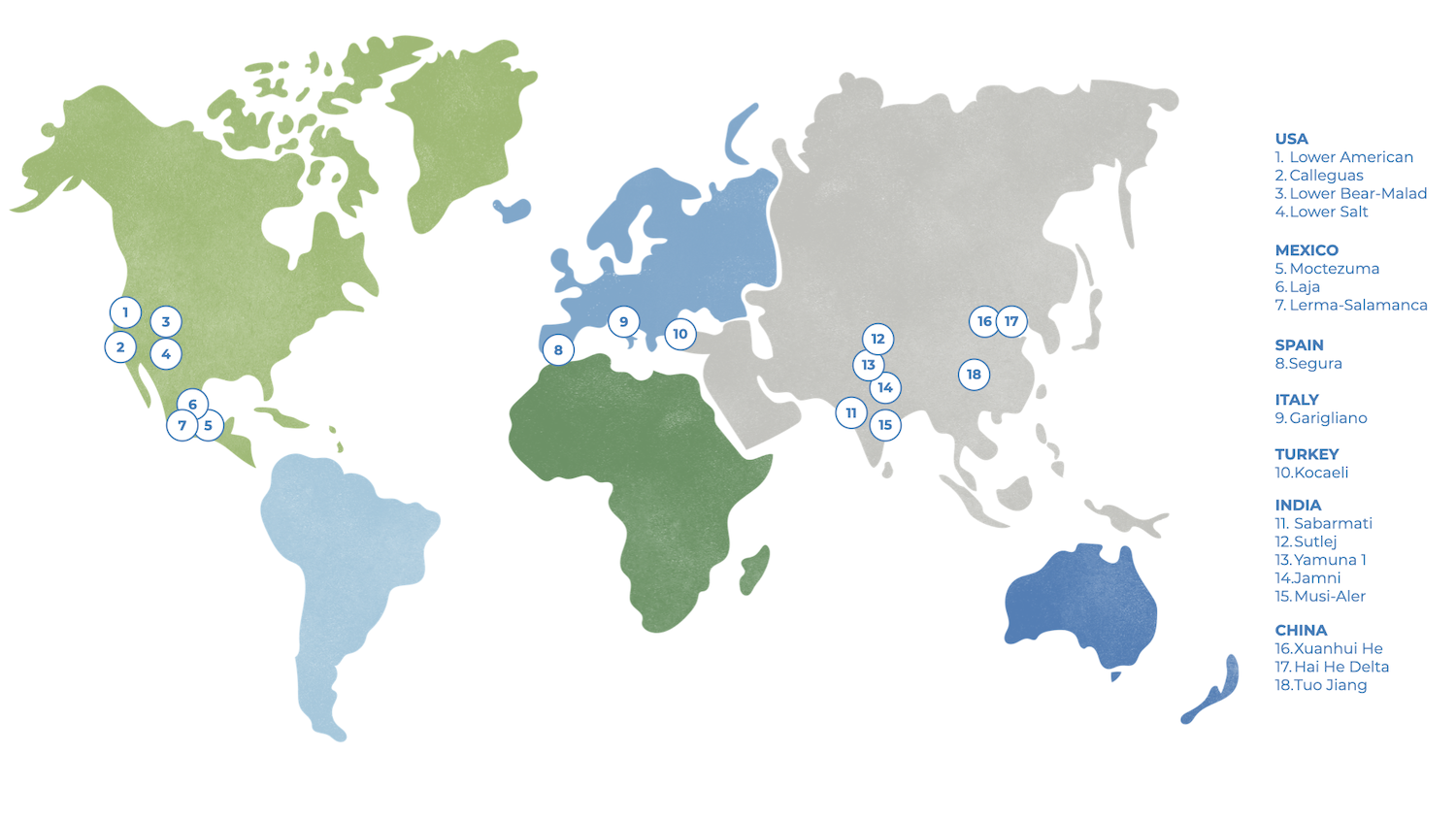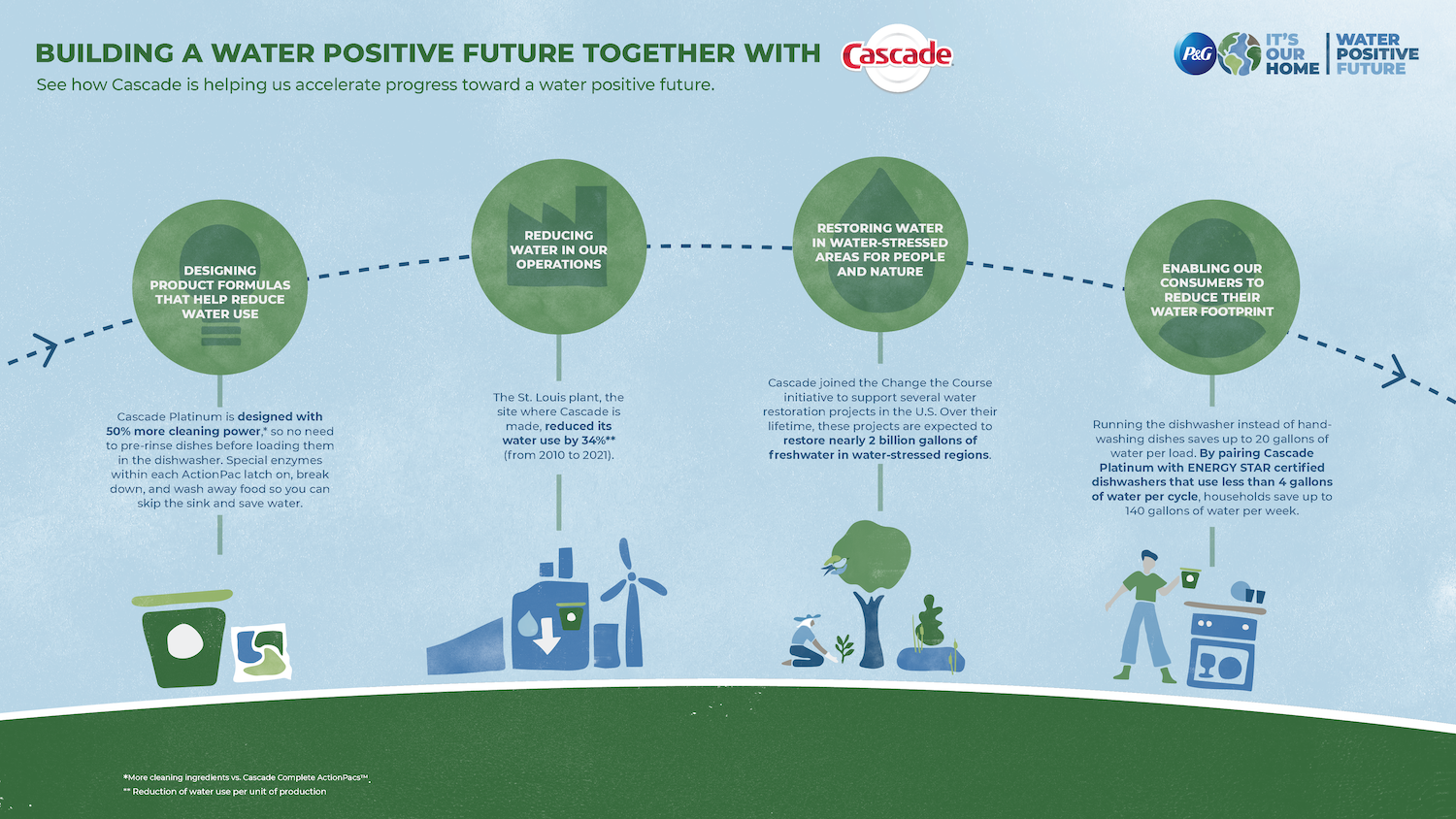Yes, Decarbonization Can Absolutely Generate Business Opportunities


Sure, there is far more to ESG (environmental, social and governance) than the “E,” but also think of that E for environmental as “R” for revenue, as the disruptive decarbonization technologies required to get the world anywhere toward a low-carbon economy will require massive amounts of investment.
“Getting to net-zero by 2050 will require $3.5 trillion of investment a year. Governments don’t have this capital — it must come from private sector,” said Elizabeth Lewis, Blackstone's managing director and deputy head of ESG during a sustainability conference hosted by The Economist in Washington, D.C. last week.
Not that investors should be seeking out any quick returns within this rapidly evolving space. “Plans for decarbonization requires planning now to reduce emissions into the future. Investors must be patient, as they’ll need to think long-term,” Lewis noted.
Lewis was among the ranks of sustainability leaders who spoke during The Economist's second annual Sustainability Week U.S., the lineup of which featured many global brands, officials from the Biden administration and various elected leaders.
Learn more about Blackstone's recent ESG work here.
Image credit: Ashraf Chemban via Pixabay
Getting Our Heads Wrapped Around All That ESG Data


ESG (environmental, social and governance) ratings and rankings are at an inflection point; among the reasons is that there are so much data out there that it’s hard to gauge what’s compelling and what creeps into green- and purpose-washing. So, how exactly can sustainability professionals actually collect this information, what can they do with it and how do we drive sustainable decision making?
As Mandi McReynolds, who heads global ESG at Workiva, the first problem to confront is that stubborn "trust issue" — as someone who has done more than her fair share of surveying investors, she added that the trust issue conflicts both institutional and individual investor alike.
“There’s a trust crumbling and quality crumbling, so you need a strong strategy and solution-driven systems,” McReynolds said earlier this week at a sustainability conference earlier this week hosted by The Economist in Washington, D.C. “You can’t chase everything — so you chase what are the strong data drivers.”
Among the concerns of investors she’s found while conducting research, McReynolds shared that one of their largest worries is what is occurring as a result of their companies’ operations. For example, one survey Workiva recently completed found that 50 percent of sustainability professionals had doubts whether the data they were supplying to their stakeholders was accurate and timely enough.
Earlier this year, McReynolds offered three high-level suggestions on how companies along with their executives, boards, investors and stakeholders can best gauge the links between ESG and value creation. First, focus on those ESG challenges that matter the most; next, be sure to accurately identify those business value drivers; and finally, keep reviewing and updating the company’s value chain.
Bottom line, think of ESG materiality and data as the horse-versus-cart scenario: Companies need to identify what absolutely matters before they sort through all those copious amounts of data.
Nevertheless, more guidance from the folks on Capitol Hill and down the street on Pennsylvania Avenue would offer a lift. Late last month, Workiva was among the companies offering public support for the Financial Data Transparency Act (FDTA), which if passed into law, would instruct eight major U.S. financial regulatory agencies to implement uniform data standards for the information they are already required to collect from any companies subjected to U.S. federal disclosure laws.
McReynolds was among the sustainability leaders who spoke during The Economist's second annual Sustainability Week U.S., the lineup of which included many global brands, officials from the Biden administration and elected leaders from across the United States.
Image credit: Adobe Stock
How Pride and Purpose Within and Beyond Lego Drives Its 'A-Z of Awesome' Campaign


Lego kicked off this year’s Pride with its “A-Z of Awesome” campaign — through which the toymaker seeks to engage the LGBTQ community in building an alphabet of representation while encouraging families to explore and discuss their different identities. This campaign continues the toymaker’s recent strategy of actively promoting representation and creativity in play and pursuing profit through purpose-driven means.
“A-Z of Awesome” will run through 2023. During this time, the brand is asking its enthusiasts and employees alike within the LGBTQ community to assist in creating the alphabet. By exploring the letters behind the abbreviations, Lego hopes to “build understanding and acceptance” — that is, according to the campaign’s press release. Those who would like to participate are invited to visit the website and pick a word from the alphabet. Builders are asked to use the hashtag #AtoZofAwesome to share their creations on social media and include an explanation of what their build means to them.
Examples of the alphabet currently on display include a colorful bed of flowers under a big striated Q for Queer, by Lego builder Marko—who is quoted on the site as saying, “Queer isn’t an easy term to explain. It represents lots of different things to different people. But it’s the coming together of varied parts of the community that represent its true strength and beauty. You just need to look at it from the right angle…” For those who prefer using the LGBTQAI+ acronym, A is for Asexual, another builder created a snapshot of the beauty of a full life, including a bike ride through a park accompanied by a four-legged friend. Kami is quoted as describing the motivation behind the scene: “In my experience coming to my identity, I found that the world is full of so much beauty and wonder. Color, music, texture, art . . . I can’t imagine a world without these things being a center point of life. And spending time with my dog is cool too!”
“The A-Z of Awesome” campaign comes at a time when reports of harassment and discrimination directed at LGBTQ citizens are rising. More than half of LGBTQ students who took part in the most recent National School Climate Survey reported feeling unsafe at school because their sexual orientation could make them a target. This held for just under half of students who feared the same because of their gender expression. Thirty-seven percent said that their gender alone was enough for them to feel unsafe. While a toymaker can’t be expected to fix statistics like that, by creating a place of expression and representation Lego certainly appears eager to do its part to change the social climate.
Hang out in the comments section of “A-Z of Awesome” social media ads long enough and accusations of rainbow-washing will inevitably appear. But while many corporations do just slap a few rainbows on in June to make a quick buck, Lego’s commitment comes across as genuine. The company works with a number of partners year-round in order to promote inclusion and representation — including Open for Business, Stonewall and Workplace Pride. And the toymaker responded to research showing that stereotype-based toys are harmful to all children by committing to remove genderization from its products and marketing — partnering with the Geena Davis Institute since the beginning of 2021 to ensure accountability in this initiative.
Pidgeon Pagonis, a contributor to the “A-Z of Awesome” campaign who is also intersex, broke down the importance of gender-neutral toys, explaining via the public statement, “Growing up I remember feeling this sense of shame, like oh there’s something wrong with me, or the things I desire or want.” They went on to explain how the campaign could help others, “This project is important because there might be an intersex person out there who likes to build with LEGO bricks, and this can help them see themselves represented. It would have been a game-changer for me to see myself reflected in stories in popular media and culture.”
The A-Z of Awesome campaign continues Lego’s commitment to a purpose-driven model of business based on inclusion and representation. As consumers come to expect more from the businesses that they spend their money with, the popular Danish brand is making the right moves to cement itself in the hearts and minds of an ever-growing fanbase.
Image credit: Lego
P&G Announces a Water Positive Future Strategy: Our Vision to Reduce, Restore and Respond


This article is sponsored by Procter & Gamble
My passion for water is in my genes. Jacques Oudin was not only my father but a member of the Senate of France where he developed and passed the Oudin-Santini law in 2005. That legislation allowed local authorities, trade unions and water agencies to devote up to 1 percent of their water and sanitation budgets to aid international projects that help restore and protect water. This international financing approach established a framework for decentralized cooperation in water and sanitation, establishing a model to encourage adoption by other countries to unlock new flows of financing and inspire collective action for water and sanitation.
His legacy continues to inspire me every day.
Seventeen years since his effort, many regions of the world still face extreme water stress. In fact, the United Nations projects that by 2025, two-thirds of the global population will live in water-stressed areas. This stark statistic illustrates the need for all of us — individuals, communities and companies — to take collective action to protect this precious resource.
At P&G, we want to help build a water positive future that can sustain people and nature, now and for generations to come. We know working toward a water positive future requires widespread solutions, collective actions and bold innovations.

We have just announced our comprehensive strategy toward a Water Positive Future.
As always, this responsibility to act starts in our own operations to conserve local water supplies. Our 138 facilities around the world continue to advance on-site water efficiency solutions and partner to develop new technology to increase use of recycled water, effectively achieving results toward the goals we set forth in Ambition 2030.
That’s why we are announcing two new water goals: to restore more water than is consumed at P&G manufacturing sites located in 18 water-stressed areas around the world, and a new commitment recognized as first-of-its-kind to restore more water than is consumed during consumer use of our products in the high water-stressed metropolitan areas of Los Angeles and Mexico City.
Our new goals focus on addressing the water that does not go back to local systems from our operations and, for the first time in our industry, from consumer use of products. "Water consumed" is the water that evaporates or is included as a product ingredient during the manufacturing of our products. And for consumers, we define "water consumed" as the water that leaks from household pipes or evaporates during the use of our products.

We are already advancing long-term water restoration projects in critical areas of the U.S. in California and Arizona, working with on-the-ground partners who have a deep knowledge of local challenges, solutions, communities and landscapes. We now extend our support for new water restoration projects in Utah and Idaho. And in the coming years, we plan to announce projects in our other priority water-stressed areas around the world, including China, India, Mexico, Italy, Spain and Turkey (see above).
These projects will support a wide range of water restoration solutions such as managing wetlands, reforesting land, improving irrigation systems, using sensors to identify and stop leaks, and supporting transformational conservation programs. Together, they will help protect ecosystems, recharge groundwater supplies, reduce the amount of water diverted from essential bodies of water, and improve water quality for the communities and wildlife that depend on it.
But P&G also has a unique opportunity to inspire more sustainable use of water among the 5 billion consumers around the world who use our products every day. Using our experience in innovation and consumer understanding, we are unlocking new solutions to water challenges that enable our consumers to reduce their water footprint.
In 2019, we achieved our goal to provide one billion people with access to water-efficient products. Cascade, Tide, Downy, Swiffer, Pantene, H&S, Herbal Essences and others brought their innovative formulas to consumers all over the world to enable people to reduce in-home water use during everyday household activities.
Today, together with our brands, we continue to create and share products, tools and information to help our consumers use less water at home. For example, by skipping the sink with Cascade and choosing the dishwasher, households can save up to 140 gallons (around 530 liters) of water per week. We are also excited about product development innovations from Pantene and Rejoice to formulate No Rinse Conditioners that enable people to condition and nourish their hair without the need for water.

Beyond these efforts, we know collective action must continue to make everyday living more sustainable.
As founding members of the 50L Home Coalition, a collaboration with other global public, private and NGO leaders, we are pushing to reinvent the future of urban water use in homes that can use 10 times less water than most use today.
The path forward will be challenging. The challenge is urgent, difficult and bigger than us. P&G is more than ever committed to doing our part to care for our shared home.
Throughout this journey that I help lead at P&G, I always carry with me my father’s vision for a more equitable and sustainable water future, embracing his pursuit of collective global action to drive impact at scale.
Learn more about our strategy toward a water positive future: P&G's Strategy Toward a Water Positive Future, P&G Unveils a New Strategy to Help Address Global Water Crisis, A Closer Look at P&G’s New Strategy to Help Address the Global Water Crisis, and 2021 Citizenship Report.
This article is sponsored by Procter & Gamble
Images courtesy of P&G
Sustainability Top of Mind for CEOs and Boards, IBM Survey Reveals


Corporate investment in sustainability has more than doubled as a percentage of revenue over the past five years, according to new research conducted by IBM.
Interviews with 3,000 CEOs across multiple industries and geographies found that the push to become a more sustainable company continues to rise as a key business priority, with 80 percent saying a focus on sustainability will drive improved business results in the next five years.
“There’s a huge amount of optimism,” Phil Spring, executive vice president and partner at IBM Consulting told attendees at a Reuters conference in London Wednesday, adding that two-thirds of the CEOs surveyed are confident they will achieve their sustainability goals.
Other key findings reported in the latest annual IBM CEO study include:
Almost half, or 48 percent of surveyed CEOs say increasing sustainability is a top priority — up 37 percent since 2021.
While 95 percent of CEOs indicate they have at least begun piloting such a strategy, just 23 percent say the initiatives are being implemented across their entire organization.
Investment in sustainability as a percentage of revenue more than doubled over the past five years.
Nearly 70 percent of surveyed CEOs say they are directly involved in defining their organization’s sustainability strategy.
Further, 51 percent of respondents cite becoming a more sustainable operation as among their greatest challenges in the next two to three years, citing unclear return on investment and technology barriers as hurdles.
Among stakeholders exerting the most pressure around sustainability are board members, 72 percent; investors, 57 percent; ecosystem partners, 49 percent; regulators, 49 percent; and government, 46 percent.
Additional top challenges confronting CEOs include regulation, 50 percent; cyber risk, 45 percent; technology infrastructure, 41 percent; and supply chain disruption, 38 percent.
“There’s a huge amount of variability and we really wanted to look at the bigger picture of what sustainability means (to CEOs),” Spring told attendees at the Responsible Business Europe conference, an event this past week that focused on an environmental, social and governance (ESG) agenda.
Image credit: Bastian Pudill via Unsplash
Carbon Capture and Sequestration Loses Ground to Carbon Recycling


Fossil fuel stakeholders continue to tout carbon capture and sequestration as an effective strategy for picking up the pace of global decarbonization, but they have yet to prove their case. The argument in favor of underground carbon sequestration has become even more difficult to prove with the advent of new carbon recycling technology, as recently illustrated by the latest breakthrough from the firm LanzaTech.
Many paths leading from carbon recycling to a decarbonized economy
In partnership with Danone and other collaborators, LanzaTech has just reported a new process for converting waste gas to PET plastic.
PET is commonly used for beverage bottles and other throwaway items, so it is fair to ask if continuing to produce throwaway plastic is a sustainable strategy, whether it is made from recycled carbon or not.
Microplastic pollution has emerged as a critical environmental and public health issue, and it could continue to be a problem whether PET is produced from recycled carbon or not. The problem is that there are no simple alternatives.
Biodegradable plastic substitutes could help reduce microplastic impacts related to petrochemical pollution, but land use issues need to be resolved before the global bioeconomy can scale up to replace petrochemicals at scale.
Glassware could replace plastic for bottles and other uses. However, glass is heavy, leading to energy-related issues for shipping and transportation. A widespread return to glass packaging would also run into competition with the construction industry and other economic interests for the global supply of high-quality silica sand.
Above all, coaxing individual consumers into adopting reusable models for their daily needs is a monumental task. Startups like Loop are beginning to spark more interest in reusable consumer packaging, but so far reusables are a vanishingly small part of the market.
A sustainable role for plastics from recycled carbon
If PET and other plastics continue to be a prominent feature in the global economy for the foreseeable future, carbon recycling will continue to be an important strategy for keeping virgin carbon — oil, gas or coal — in the ground.
LanzaTech has previously developed a fermentation-based system for capturing and recycling carbon from steel mill biomass waste gases and biogas, in which the company’s proprietary microbes digest carbon-rich gases to produce the building blocks for petrochemical equivalents. Initial products included ethanol and 2,3 Butanediol, which is a building block for plastics and other substances.
The new LanzaTech-Danone collaboration has added another important petrochemical equivalent to the list, monoethylene glycol, (MEG), a syrupy, liquid substance with many end uses.
“The carbon capture technology uses a proprietary engineered bacterium to convert carbon emissions directly into MEG through fermentation, bypassing the need for an ethanol intermediate, and simplifying the MEG supply chain,” LanzaTech explains.
“We have made a breakthrough in the production of sustainable PET that has vast potential to reduce the overall environmental impact of the process,” added Dr. Jennifer Holmgren, LanzaTech's CEO.
Recycling carbon for the sustainable economy of the future
As of this writing, the LanzaTech breakthrough has passed the proof-of-concept stage. If the technology reaches the commercial market, the impact on the global economy will be significant, as indicated by an MEG fact sheet produced by Shell about 10 years ago.
“Mono-ethylene glycol - or MEG - is a vital ingredient for the production of polyester fibres and film, polyethylene terephthalate (PET) resins and engine coolants,” Shell explained. “End uses for MEG range from clothing and other textiles, through packaging to kitchenware, engine coolants and antifreeze.”
Shell also listed polyester and fleece fabrics, upholstery, carpets and pillows, light and sturdy polyethylene terephthalate drink and food containers, paper, adhesives, inks, and more.
“Global MEG demand was around 21 million tonnes in 2010. Forecasts suggest that by 2015, demand could be above 28 million tonnes per year,” Shell added.
The MEG market has continued to expand since then. As of January 2022, the firm Transparency Market Research noted that “increasing use of monoethylene glycol in the textile industry is likely to foster the growth of the global monoethylene glycol market during the forecast period, from 2021 to 2031.”
“Demand for monoethylene glycol is increasing rapidly across Latin America and the Middle East & Africa, owing to expanding PET and polyester usage in these regions,” the report forecasted.
That could be the tip of the iceberg. LanzaTech’s new breakthrough is not the only worrisome development for fans of carbon capture and sequestration. Carbon recycling is also beginning to emerge in other market areas, including spirits and perfumes.
Image credit: Jasmin Sessler via Unsplash
The Midterms are Coming: Here’s How to Not Drop the Voting Rights Ball


Washington, D.C., June 2022.
Business leaders who profess to support their employees on women’s rights, LGBTQ equality and other critical issues have a chance to prove their sincerity this year, as the all-important midterm elections approach. Even though 2022 is not a presidential election year, the outcome of Election Day and how voting rights prevail could have a significant impact on corporate diversity, equality and inclusion programs -- and not in a good way, if the Republican party gains control of the House and Senate.
Why the midterms matter
Many voters appear to believe that the president of the United States can pass legislation with a wave of their pen, but that is not the case. The president can only sign bills into law that have passed Congress – the House of Representatives and the Senate. If the president is to achieve their legislative goals, their party needs to control a working majority in both the House and the Senate.
However, getting Democratic voters to the polls is going to be a challenge, this year more so than others.
According to Pew Research, the mid-term voting drop-off has been a fixture among the U.S. electorate since the 1840s. The balance of power in Congress would not necessarily change just because fewer people vote in the midterms. However, state-based Republican leadership has taken two key steps to ensure that the Democratic party loses its current majority in Congress: suppressing the Democratic-leaning Black vote and other communities of color, and drawing new district maps for the House that exclude Democratic-leaning voters.
In addition, Republican leadership in Congress has taken steps to ensure that the “presidential penalty” is in full force. With the assistance of the 60-vote filibuster threshold and two Democratic Senators (Joe Manchin and Kyrsten Sinema), the Republican minority in Congress has succeeded in blocking major parts of President Biden’s policy agenda. The effort all but ensures that many voters who cast their ballot for Biden in 2020 will be let down by Election Day 2022. They will either not vote at all, or they will vote for other Congressional candidates, not Democratic candidates.
All is not lost…yet
As of this writing, it appears that state-based efforts to gain a Republican majority in Congress may not have quite the impact that Republicans anticipate.
On redistricting, the Republican Party hoped to gain seats in the House through new state district maps drawn by Republican leadership. However, some analyses show that the Republican Party actually stands to lose seats overall.
Editor's note: Be sure to subscribe to our Brands Taking Stands newsletter, which comes out every Wednesday.
Meanwhile, earlier this week reporter Alex Samuels of the data-driven news organization 538 drew attention to evidence that voter suppression efforts can backfire.
Unfortunately, business leaders who support the DEI movement cannot take heart from either one of those news items. If Republicans gain a majority in the Senate, they will continue to block the Democratic agenda, regardless of which party controls the House.
More to the point, Samuels throws cold water on the idea that the backfire effect can overcome voter suppression laws.
Citing the example of Georgia’s new voter laws on turnout for the state’s May 24 Primary Election, she wrote:
“It’s important to remember, though, that you can’t out-vote or out-organize voter suppression tactics, and it would be disingenuous to say that the new restrictive laws had no tangible effects on voters since we just don’t know, for instance, how many people didn’t vote or experienced difficulties because of the new law.”
“On top of that, since primary elections tend to draw highly engaged voters, it’s way too soon to draw any conclusions about the effects of these new laws. That means that the real test of these restrictions will likely come in November,” she added.
More voting rights obstacles to overcome
In fact, business leaders who support DEI need to be more aggressive than ever in turning out the vote in Democratic-leaning communities this November. Redistricting, voter suppression and the “presidential penalty” are not the only tools in the Republican toolkit.
Voting rights stakeholders have also begun to raise alarms over Republican efforts to control the electoral machinery itself. Last January, Matt Vasilogambros of the Pew Charitable Trusts publication Stateline observed:
“The pervasive myths of a stolen 2020 presidential election and widespread voter fraud are still dominant in many state legislatures, as Republican policymakers call for more investigations and reshape election administration in a way that could give them a partisan advantage.”
Citing the example of Georgia, he wrote that “the Republican-led State Election Board could use a new state law to install partisan officials on county election boards in Democratic-leaning areas, giving them the power to decide which ballots to reject or even overturn results.”
Another highly concerning factor is the confluence of gun rights fetishism with the intent to overthrow the results of a legitimate election by force, as amply illustrated by the failed insurrection of January 6. Were it not for tight gun restrictions in Washington D.C., the bloodthirsty mob that attacked Capitol Building that day could have easily outgunned the Capitol Police and carried out its threat to murder Vice President Mike Pence, among others.
It is no accident that the Republican-appointed, conservative majority on the U.S. Supreme Court appears inclined to undermine state-based gun restrictions, opening up the potential for more lethal violence at the heart of the legislative process throughout the U.S.
Corporate Action 101: follow the money
If the Republican Party gains control of the Senate in 2022 and beyond, business leaders can look forward to a wave of Congressional actions that amplify and reinforce the Party’s state-based efforts to undermine the corporate DEI movement.
Instead of supporting DEI as a matter of federal policy, Congress is likely to pass bills that pull back LGBTQ rights, impose state and community policing on pregnant people, and suppress Black voters and others who lean Democratic, in addition to relaxing gun regulations and rolling back federal action on climate change and environmental protection.
In short, corporations with DEI programs are in the middle of a nationwide existential fight, which they will lose if they fail to apply every tool in their own toolkits. Corporate leaders need to make clear, beyond any shadow of a doubt, where they stand on support for the democratic process and the rule of law.
A good place to start would be the January 6 Committee hearings, which are scheduled to begin on Thursday, June 9. The Thursday hearing will take place at 8:00 p.m., during television’s influential primetime. Business leaders can and should encourage their employees, and the public at large, to watch the hearing and see with their own eyes the evidence of Republican complicity in an effort to overthrow the democratically elected government of the United States of America, the very nation that styles itself as the upholder of universal democratic principles to the entire world.
To follow up, corporations need to pour more resources into their get-out-the-vote efforts. That doesn’t mean more public service announcements and social media campaigns. That means hardcore financial support, such as providing paid time off to vote on Election Day, time off to participate in the process as a poll worker, and time off to participate as an official poll watcher, as well as providing financial support for voter clinics and legal resources for voters caught up in suppression laws.
Above all, business leaders need to take a good, hard look at their financial support for Republican elected officials and candidates. Many corporations talk a big talk on human rights and civil rights, but they fail to exercise their financial power when Republican candidates and political action committees come calling for campaign contributions.
The time for compromises is over when the Republican Party adopts the position that it is forever entitled to hold office, by force if necessary, regardless of the will of the voting public.
Business leaders should not be lulled into complacency by the redistricting results, the backfire effect, or any other suggestion that the Democratic Party is likely to hold Congress after the midterms. They must be vigilant and press every opportunity to ensure that every eligible voter has access to the ballot box – and that the will of voters determines the final result on Election Day 2022, not administrative partisanship or physical violence.
Image credit: Leon Kaye
How Consumer Goods Companies Use Life Cycle Assessments to Create More Sustainable Products


This article is sponsored by P&G
As shoppers continue to gravitate toward more sustainable products, consumer goods companies are challenged to develop new innovations that answer the call — and to hone the ways in which they communicate with consumers about what makes a product sustainable.
While interest in sustainable product alternatives is on the rise across the board, studies show consumers are beginning to tire of generic “green” marketing and instead look for particular product attributes that align with their values and help them live more sustainable lives without sacrificing the need for the product to deliver quality performance.
Life cycle assessments, or LCAs, can be a valuable tool for consumer companies as they look to respond to consumers’ sustainability expectations. A tried and tested exercise that has been around since the 1990s, LCAs are used to assess the environmental impact of a product at every stage of its life — from raw materials sourcing through processing, manufacturing, distribution, use, and disposal.
“A life cycle assessment is a science-based approach that gives companies a holistic way to examine the total environmental impact of all these steps in the process — and the relative impact of each step,” said Terry Hare, senior director of research development for Procter & Gamble’s Dish Care.
Given the booming interest in product sustainability, consumer goods companies are finding new value in LCAs to not only analyze how their products impact the planet and identify ways to cut that impact down to size with product innovation, but also how to best share these opportunities to reduce impact with its consumers.
P&G leverages a carbon emissions-based LCA to evaluate its products. With dish soaps and detergents like Dawn and Cascade, P&G’s LCA found that up to 80 percent or more of the carbon emissions associated with dish care products like Dawn and Cascade come from the consumer use phase. But that doesn’t mean the company has no role in reducing those impacts. By better understanding consumer behavior, the company can design products that promote more sustainable habits, while also identifying ways to reduce its share of total product footprint, Hare said.
Leveraging LCAs to solve problems for consumers (and the environment)
“We are seeing consumers continuing more and more to want to do the right thing when it comes to sustainability and make smart choices when it comes to caring for the planet,” Hare told us. “We’re also seeing a general frustration in figuring out what that right thing is.”
For example, studies show that washing dishes by hand with the faucet running has the greatest environmental impact in terms of wasted water and energy, but many Americans still leave the tap running as they go through this daily chore on autopilot. It’s certainly understandable — most of us have enough going on — but the U.S. Environmental Protection Agency estimates that each of us can save up to 10 gallons of water per load of dishes, and enough energy to power a 60-watt light bulb for 18 hours, simply by shutting off the tap.
Consumer goods companies have a role to play in promoting better habits like these through product design and innovation, Hare said. For example, P&G has designed a new Dawn dish care product (Dawn Powerwash Dish Spray) with the explicit goal of cutting water and energy use on the consumer side, including a spray-activated sudsing soap that essentially eliminates the need for water until it’s time to rinse a load of dishes. “We inherently built that in from the beginning of the design,” Hare explained.
At the same time, if a company like P&G plans to promote a product as enabling a more sustainable lifestyle, it must also do its part to make sure the other parts of that product’s life cycle — from materials to manufacturing and packaging — also have less impact when compared to other options on the store shelf.
For its part, P&G reports that it increased the use of recycled plastic in product packaging by 32 percent during the last fiscal year and purchased 98 percent renewable energy for all company-owned facilities, among other efforts to boost sustainability in manufacturing.
“Follow where the science takes you”
As more companies in the consumer goods segment and other sectors look to leverage LCAs to improve product sustainability, Hare advises business leaders to “go into these types of assessments with an open mind and be ready to follow where the science takes you.”
“You may discover that a space that you were putting a lot of your resources, time, and energy into may be a small piece of the pie”,” she explained. “So be open to shifting your mindset and going after things that maybe were counterintuitive to you at the start. If the science is telling you ‘this is where you can have an impact,’ be willing to explore that and explore what's possible.”
This article is sponsored by P&G
Image courtesy of P&G
Double-Check Your Company’s Lobbying Spend Before Going Full-On for Pride Month


Pride Month is a time for LGBTQ people to celebrate how far the community has come, while it’s also a sobering reminder of how much lies ahead until everyone is treated equally. This year’s Pride comes at an inflection point, as old tropes such as “grooming” are once again coming into public discourse and politicians deflect responsibility and accountability by striving to legislate away transgender people’s rights.
Once slow to embrace the human rights of their LGBTQ employees, more companies are seeing Pride Month as a branding opportunity, evident in the rainbow-clad corporate logos we see every June. But there’s a problem with the showcasing of LGBTQ-themed events and proclamations of “allyship,” and it’s not only due to crossing the line into “rainbow-washing,” as independent journalist Judd Legum recently pointed out.
Legum and his small team dug into a rabbit hole of corporate donations to politicians and political candidates who promote legislation that erodes LGBTQ rights. The 25 companies Legum's team at Popular Information analyzed together have donated more than $13 million to anti-LGBTQ political leaders since early 2021. The roster reads like a who’s-who of America’s top brands, with the three such largest donors being Charter Communications, AT&T and GM.
All of these companies have received high, even perfect scores, from the Human Rights Campaign (HRC), the most powerful and active LGBTQ human rights activist group in the U.S. So, what’s going on? The HRC has long done good work, “but HRC's methodology excludes political donations, enabling corporations to craft a pro-LGBTQ image while bankrolling politicians that are undermining LGBTQ rights,” Legum noted in his Popular Information newsletter on Thursday.
Editor's note: Be sure to subscribe to our Brands Taking Stands newsletter, which comes out every Wednesday.
Ever since Bill Clinton’s presidential administration, the U.S. business community — which had long leaned overly Republican — has donated to “both sides” of the political divide for a simple reason: Corporations need to cultivate allies no matter who is in power.
But there’s a problem: The “both sides” argument is hard to defend when elected officials are aggressively doing what they can to not only chip away but hack away at some people's fundamental rights.
In the wake of Florida’s new “Don’t Say Gay” law and similar moves by state legislatures across the U.S. — not to mention the radicalization of the Supreme Court — we’re facing a time when the only force with the resources to stand up for LGBTQ rights is the business community. People shouldn’t count on companies to follow through, though, as the fallout after when Disney put itself through in Florida doesn’t bode well. Some anecdotal evidence suggests that more companies could retreat from sticking up for their LGBTQ employees, as noted in this recent LinkedIn blog.
Fortunately, Pride Month is also a reminder that LGBTQ workers can make their feelings and opinions known with their feet. As this writer concludes:
“…just remember that you have two choices: stay where you are and fight like hell to change things from within your company, or update your resume and begin looking for a new work community. Considering the number of openings that exist right now in most fields, you will have a new and much more accepting “home” deserving of your talent, your passion and your loyalty in no time whatsoever. Never forget that you matter and you have a great deal to offer to any company fortunate enough to hire you.”
And one way to “fight like hell” before, during and after Pride Month is to challenge a company’s lobbying spend.
Image credit: Leon Kaye
Netflix, DWS, PepsiCo: Climate Action Matters, and Matters Now


Herne Bay, Kent, coastal U.K., where the final scenes of Heartstopper were filmed.
Netflix may have seen the epic series Schitt’s Creek drift away to Hulu in the latest round of the streaming giant wars, but the entertainment leader is gaining in its drive on climate action.
That’s according to Emma Stewart, who leads sustainability efforts at Netflix. “We’ve put our company on a carbon diet in line with climate science,” she said earlier today at a sustainability conference in Washington, D.C.
The streaming giant’s commitments range from its ongoing work to protect and restore carbon sinks to a huge lineup of series and documentaries focused on sustainability. On the latter point, the company says at least 160 million households around the world have watched content centered around climate-related challenges. Such work is critical for a company of Netflix’s scope, especially if its filming locations, such as the U.K.’s Hearn Bay (where the final scenes of the streaming service’s Heartstopper was filmed), will continue to thrive and mitigate future climate change risks.
So how does Netflix stay on task? Stewart described the company’s framework as “OED” — three overarching pillars in which the company optimizes, electrifies and decarbonizes its operations.
You may be saying, in the words of Schitt’s Creek’s David Rose, “I don’t know what that means.” Well, optimize is the low-hanging fruit, as in energy efficiency and ensuring operations across Netflix’s operations run smarter and nimbler. Electrification can apply to how the company’s production sets operate, such as eschewing diesel generators on set and moving crews via electric vehicles instead of gasoline-powered ones. What can’t be optimized or electrified, Stewart added, needs to be decarbonized, as in investments in sustainable aviation fuels (SAF); the company recently co-founded the Sustainability Aviation Buyers Alliance in a the drive to expand access to SAF.
Other companies within industries vastly different from Netflix also need to embark upon a similar high-level approach as they seek to make their companies more responsible, more sustainable and more responsive to the demands of their stakeholders. Take Dupont Water Solutions (DWS), which shared the stage with Netflix’s Stewart. DWS’ has two massive pillars it’s aware of day-to-day: water and energy. “In our business, we wrestle between energy and water every day," said Alan Chan, a vice president and general manager at DWS. “On one hand, we enable our shareholders and stakeholders by optimizing water, and doing so by not consuming more energy. And we believe that water and greenhouse gas emissions have always been closely linked; you cannot separate the two.”
Worldwide, 40 percent of all generated electricity goes into water treatment, whether it’s purifying water for drinking or processing wastewater, Chan said.
Moving on to how food and beverage companies can become part of the global drive toward climate action, PepsiCo’s chief sustainability officer, Jim Andrew, noted how his team is contributing to the company’s evolution. The three pillars within this segment of PepsiCo’s strategy are regenerative agriculture, sustainable packaging and investments in renewables, said Andrew.
Such focus is crucial, explained Andrew: “We’re actually an even bigger food company – 55 percent food, in fact.”
Steward, Chen and Andrew helped kick off The Economist's second annual Sustainability Week U.S., the lineup of which includes many global brands, officials from the Joe Biden administration and elected leaders from across the United States.
Image credit: Claire Smith/Unsplash